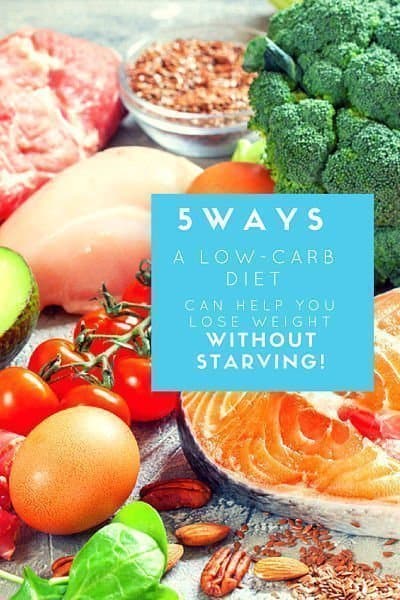Hitting A Plateau? Ways to Succeed With Intermittent Fasting
Last Updated on March 7, 2021 by Paula
Scaling Up Intermittent Fasting
If you have gotten to this point in the book, congratulations! This means you’ve taken care of the heavy lifting. Chances are you have achieved some sort of momentum so it’s harder for you to stop fasting than it is to start. Again, congratulations!
However, I have some bad news for you. Depending on how your personal physiology is set up, you may hit a plateau sooner rather than later. Don’t get me wrong. When you adopt intermittent fasting, you can lose a lot of weight.
At first, a lot of this is water weight. Did you know that a huge chunk of your weight, maybe twenty percent, is based on the water that you are retaining? This varies from person to person. Some people retain a lot more water than others.
However, when you go on intermittent fasting or you adopt a new diet like the Atkins diet or paleo diet, a lot of the initial weight loss is actually from your water weight. Regardless, it looks awesome. You may have a lot of jiggly fat around your body and you start trimming down. When you look at the scale, you can’t help but want to jump for joy. This is the easy part.
When you adopt intermittent fasting, eventually, you may hit a plateau. Some people hit this sooner than others. This is when all the easy weight loss is gone. What do you do then? That’s when you scale up. This is where you start to trigger ketosis so you can go from just burning your retained water to burning actual fat.
The good news is you don’t have to go onto a full fast like some sort of monk. It’s not like you pack up all your belongings, put it in the car, head to the nearest mountain, and just meditate on anything for weeks on end. That’s not the kind of fasting I’m talking about. There is an easy-to-scale process where you can take intermittent fasting to a whole other level.
Step #1: Eat-stop-eat
With this intermittent fasting protocol, you actually fast. That’s right. You go a full day without eating. However, as the name implies, you eat a full day then you stop for a full day then you eat again. This operates on a pure one-one-one basis. You just basically skip eating every other day.
The good news is for many people, ketosis or fat burning is triggered when you don’t eat anywhere from 16 to 24 hours at any one time. Of course, when you eat a lot of carbs, it’s going to take a lot longer for you to achieve ketosis.
In fact, eat-stop-eat is probably not going to work all that well for you if most of your diet comes in the form of rice, mashed potatoes, pasta, or white bread. However, if you eat really moderate amounts of carbohydrates and lean more towards protein or fatty foods, eat-stop-eat can help you burn fat.
Step #2: 2-2-2
In this protocol, you level up from eat-stop-eat to fasting two days in a row. You follow that up with eating two days in a row. This increases your chances of triggering ketosis.
Step #3: 3-3-3
You just add another day to the 2-2-2 protocol to enjoy higher levels of ketosis. During the times that you’re not eating, you have a high chance of burning fat. In fact, your fat-burning period extends way longer than eat-stop-eat or the 2-2-2 protocol. Still, a lot of this has to do with how much carbohydrates you have in your diet. If you adopt a low-carbohydrate or ketogenic diet, 3-3-3 can work wonders not only for weight loss but also for fat loss and looking better.
If you are struggling with your weight, you know full well that a large part of your physique is covered by fat. When you adopt the 3-3-3 protocol and trigger ketosis, a lot of that fat layer starts to melt away, and you can start seeing the muscle mass you have underneath. If you pair this up with a little exercise, you’d quickly realize how good you look under all that fat. Sounds awesome, right?
Well, there’s one missing piece. Keep reading.
You May Want to Consider This
The secret to burning belly fat is not sweating buckets at your nearby gym. It also doesn’t mean that you have to run an Iron Man triathlon every other month.
To lose belly fat, you have to focus on your diet. For the longest time, scientists thought that people pile on fat in their midsection or butts or the back of their thighs because they eat a lot of fatty foods.
This has been debunked fairly recently. It turns out that when you eat a lot of carbohydrates in the form of rice, white bread, pasta, soda, drinks, mashed potatoes, or potato chips, your body turns the excess sugar from all that starch into fat. Since you’re not a plant, your body cannot store it in the form of sugar or starch. Instead, it stores all that extra energy in the form of fat.
If you live a very sedentary lifestyle, it can take years for your body to burn all that stored-up energy. This is why you have that nasty-looking spare tire around your midsection. You can trace a lot of that to your sweet tooth, your taste for candy bars, cookies as well as staples like rice, corn, and other starchy food.
Thankfully, there is a solution to this. Adopt a low-carb, high-fat diet. Please pay attention to what I just said. I did not say “low-carb, high-protein diet.” I said “low-carb, high fat diet.”
The reason why you can’t go too crazy on protein is because your body converts protein into sugar in a process called glycogenesis. Your liver turns protein into sugar, which then stores as fat. When you eat a lot of fat, you train your body to use fat as its main source of energy. You remain in ketosis for a longer period and, before you know it, you burn your stores of fat.
Another great advantage of adopting a low-carb, high-fat or ketogenic diet is you feel less hungry throughout the day. If you don’t believe me, try ingesting a tablespoon of olive oil. It isn’t all that pleasant, but your body reacts to that ingestion of calorie-dense fat in a very predictable way: it feels fuller for a longer period.
Adopt a Mindfulness Routine
Regardless of whether you are sticking with the classical 8- to 10-hour feeding window, or you have ventured into eat-stop-eat, 2-2-2, or 3-3-3, you would be doing yourself a big favor if you adopt a mindfulness routine.
This doesn’t have to be anything fancy. You don’t have to adopt some sort of formal meditation practice. Just get into the routine of practicing mindfulness. When you do this, you are able to control your thoughts better and practice more effective self-discipline.
Please understand that this doesn’t happen overnight. It takes quite a bit of practice but, before you know it, you are less likely to give you into your hunger pangs and stick to your feeding schedule. Once you achieve that kind of momentum, eventually, it feeds into itself and reinforces itself and helps you become a more disciplined person.
By using a mindfulness practice, you become more disciplined with your intermittent fasting, and your discipline spills over to the rest of your life. That’s right. A bit of self-control in one area of your life makes your whole life all that much better.





